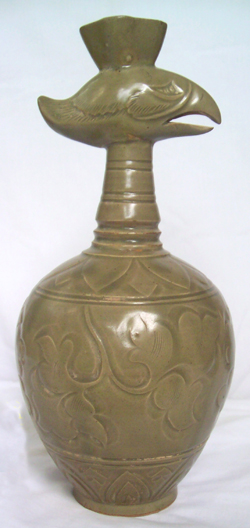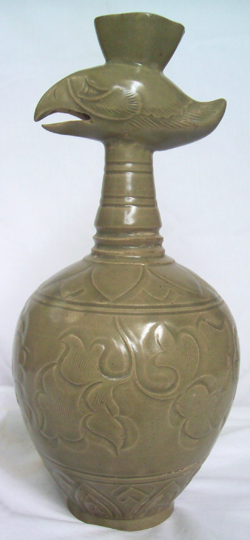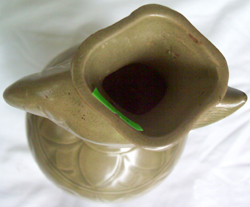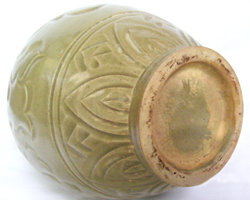



The
Story of
Celadon
Ceramics
Celadon
Stoneware is easily one of the most popular and longest-lived pottery types ever produced in China. The style is thought to
have originated during the Five Dynasties period (907 - 960). Its Chinese name,
Qingci, translates as "greenish Porcelain."
Celadon Ceramics are often described as minimalist in design, usually lacking cluttered decoration. As the skill of the potters increased over the centuries the glazing took on a
magnificent jade-like appearance and texture.
Longquan County in Zhejiang Province is considered to be the most
important producing region for Celadon ceramics. Most of the pieces in
The Chalre Collection were
produced in this region.
The name Celadon is a European word with a strange story for how it came to be used. Celadon was
originally the
name of the hero of a romantic story called L'Astre written in 1610 by French writer, Honore
d'Urfe. The hero in the stage production dressed in green and the colour became all the rage in
Europe.
It was around this time that Chinese
Qingci Ceramics made their debut in Paris to great acclaim. Everyone compared its
deep green to Celadon's outfit
in the play and started calling the Porcelain "Celadon."
France being the style-leader of Europe at the time, other countries followed
along.
|
Bottle Vase with Phoenix Head
CERAMIC ARTIFACT #ce-005408
DESCRIPTION:
Celadon
bottle
vase with impressed leaf design on the center section. Lotus petal
patterns are impressed on bottom and near the neck. The artifact
is topped with a beautiful phoenix head. It is covered a thick Celadon glaze of
deep green.
ORIGIN:
The
artifact was produced in China,
probably in the region of Longquan in Zhejiang province. It was
brought to Southeast Asia as a valuable trade-good probably by an ancient Chinese trading
ship and sold among one of the many thriving Chinese communities
living in Southeast Asia. The object probably ended up as a burial
object
of a prominent individual. Centuries later, it was rediscovered by
excavators and subsequently acquired by The Chalre Collection through a registered dealer.
AGE:
Produced
in the Ming
Dynasty period (1368 - 1644).
MEASUREMENTS:
Height:
32cm (12.5in.)
Width or Depth:
15cm (6.in.)
REFERENCES:
Similar
and/or identical artifacts are found in various publications dealing
with Asian Ceramic Art including: Chinese Ceramics,
Guangdong Ceramics and
possibly The Art of
Chinese Ceramics and Song
Dynasty Ceramics.
Other similar or identical examples can be found in publications dealing
specifically with ancient shipwrecks excavations. Good examples
are Lost
At Sea: The Lena Shoal Junk and The
Pearl Road: Tales of Treasure Ships.
Similar
and/or identical
items are also on display at the Victoria & Albert Museum in London
(UK), the Asian Art Museum in San Francisco (USA), the National Museum
of Malaysia (Kuala Lumpur), the National Museum of the Philippines
(Manila) and
other museums
throughout the world with diverse collections of Asian ceramics.

|